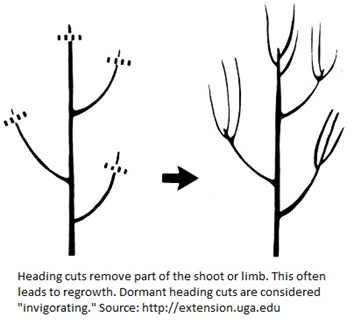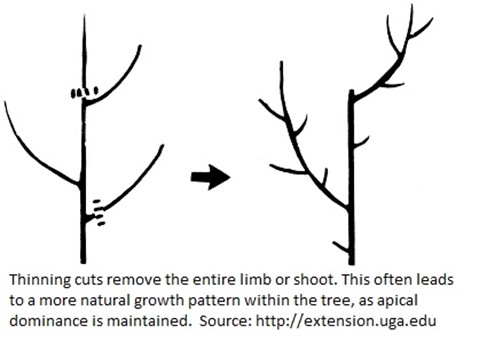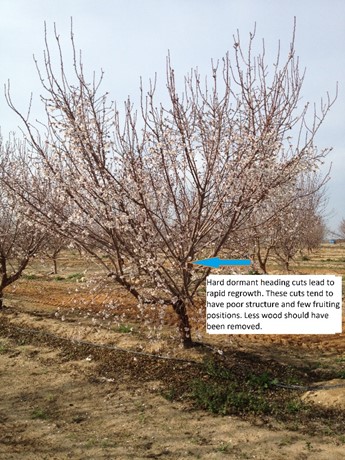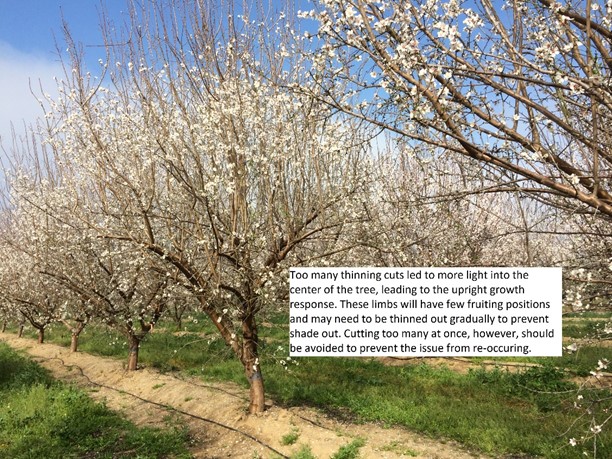Pruning is the practice of removing unwanted branches from the tree. Pruning can be broadly categorized to two types of cuts: heading and thinning. Heading cuts remove the terminal bud from the limb. This removes the “control center” and creates a varied response depending on the tree growth stage. Thinning cuts remove an entire limb is removed at a specified junction. This, as long as it is made in a position of low light, will often lead to little regrowth, regardless of when the cut was made.
When making heading cuts, the time of the year matters. Dormant heading cuts often lead to an increase in vegetative growth the following spring. They are sometimes considered “invigorating cuts,” and can also be employed to redirect growth of a limb. In-season heading cuts will slow growth and are considered de-invigorating. These cuts slow canopy development as the tree has to redevelop the vegetative buds to push new growth. If timed appropriately, in-season heading cuts can lead to thickening of limbs and reduced breakage from wind and crop. Regardless of when they are made, heading cuts create branching.
The growth response from a dormant heading cut depends on “how hard” the tree was cut back. The more proximal the cut (towards the trunk of the tree), the more vigorous the growth response. These growth responses originate out of epicormic buds, or buds that lay dormant within the wood of the tree. When these buds push, they grow without regulation and have very long internodal distances. This leads to very rapid, vertical growth that often has few fruiting positions.
Thinning cuts can be made any time of the year. These types of cuts remove entire limbs and are commonly used to remove limbs from the lower canopy. Too many thinning cuts, however, can increase the amount of light that filters into the tree. This increase in light triggers the regrowth of the tree through epicormic buds, leading to poorly structured wood that tends to grow vertically through the center of the tree. .
.
Under most circumstances, I am an advocate of thinning cuts when possible. Within young trees, thinning cuts remove unwanted or poorly structured limbs providing the opportunity for the other limbs to grow and recapture the lost light. Within mature orchards, thinning cuts remove dead and unwanted limbs, reducing “stub cuts” and “limbing up” trees for under canopy operations. These types of cuts should be used with discretion as removing too much from young trees will reduce early yields, while removing too much from older trees will lead to vertical regrowth.




Dale
December 10, 2018Thanks for all your help and scientific work on almonds.
Good luck in Portugal
David Doll
December 14, 2018Thank you, Dale. Hope you are doing great.
Presley
September 11, 2019Thanks for taking the time to educate those out there. Pruning a tree can be confusing, and we can sometimes get over zealous and snip too much! You’ve given a great explanation on how to properly prune!
David Doll
September 29, 2019Thanks. I agree, having the pruning shears in your hand can create some type of weird “power trip.”
David